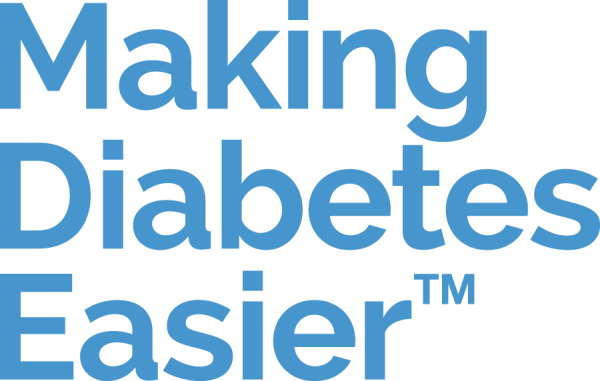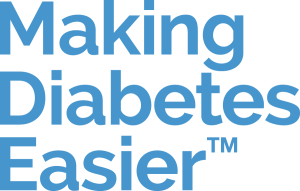Type 1 diabetes in children

Type 1 diabetes is the most common metabolic disorder in children and adolescents, but it can affect people of all ages [1].
It is a chronic autoimmune disease resulting from destroying insulin-producing beta cells in the pancreas. It is characterised by a high glucose concentration in the blood, called hyperglycaemia [1,2].
The prevalence of type 1 diabetes in children and adolescents is rising worldwide. Thanks to numerous studies, knowledge of this condition has greatly improved over the past 25 years, and although some grey areas remain, a better understanding of the warning symptoms of type 1 diabetes onset has made it possible to implement effective treatment and improve the lives of children who live with it [1,2,3].
Symptoms
Among the signs of type 1 diabetes in children are the most common symptoms of hyperglycaemia, notably:
- an urge to urinate more often than usual, day and night, with greater quantities of urine
- unusually extreme thirst
- significant weight loss
- fatigue [1,4]
More rarely, a child with type 1 diabetes may also be prone to vomiting, shortness of breath and may experience abdominal pain (these are symptoms of DKA, explained below)[1].
These symptoms usually occur in the early stages of the condition. They are difficult for parents to detect as they are easily mistaken for those of many other common childhood illnesses [4].
How long does it take to diagnose type 1 diabetes?
Studies show that the time elapsed between the onset of type 1 diabetes symptoms in children and diagnosis by the doctor is, on average, about two weeks [4]. When the diagnosis is delayed, the principal risk is diabetic ketoacidosis, a life-threatening hyperglycaemia complication that can have irreparable consequences for the brain, such as memory and cognitive disorders [1,3,4].

Diagnosis
Although screening for type 1 diabetes is strongly recommended for people with a family history of diabetes, research shows that between 85% and 90% of newly-diagnosed children with type 1 diabetes do not have relatives with the condition [3].
As soon as a positive diagnosis of type 1 diabetes in a child is made, it is recommended to be managed by a specialist healthcare professional or a paediatrician experienced in diabetology. The sooner the child receives the correct treatment and is educated alongside their caregiver to manage blood glucose levels, the lower the risk for short and long-term complications. [1,3]
Treatments
Once a child has been diagnosed with type 1 diabetes, they will require lifelong insulin therapy and will need to monitor their blood glucose levels daily [1].
There are several possible therapeutic solutions.
Insulin can be given either:
- via multiple daily injections
- by continuous insulin infusion (insulin pump).
Insulin dose calculation is based the carbohydrate intake, physical activity, and regular blood glucose readings [1].
During childhood and adolescence, glycaemic testing must be conducted rigorously to avoid the onset of long-term complications, growth problems, and cognitive disorders [1,5].
Why is it important to follow the treatment prescribed?
If the prescribed treatment is not followed closely, ophthalmic, cardiac, and renal complications may also eventually appear. These risks are considerably reduced in children receiving daily insulin doses [5].
The normal physical development of children and adolescents with type 1 diabetes should be monitored through regular height and weight measurements [1].
Today, type 1 diabetes may be diagnosed early in childhood but remains a condition that cannot be cured. However, with proper treatment, support and monitoring, children can live a normal life with minimal impact on their overall health and well-being [5].
Sources
- Ralph Ziegler, Andreas Neu. Diabetes in Childhood and Adolescence. Dtsch Arztebl Int. 2018 Mar 2;115(9):146-156. doi: 10.3238/arztebl.2018.0146.
- Linda A DiMeglio , Carmella Evans-Molina , Richard A Oram. Type 1 diabetes. Lancet. 2018 Jun 16;391(10138):2449-2462. doi: 10.1016/S0140-6736(18)31320-5.
- Kimber M Simmons , Erin Youngkin , Aimon Alkanani , Dongmei Miao, Kristen McDaniel, Liping Yu, Aaron W Michels. Screening children for type 1 diabetes-associated antibodies at community health fairs. Pediatr Diabetes. 2019 Nov;20(7):909-914. doi: 10.1111/pedi.12902. Epub 2019 Aug 18.
- Juliet A Usher-Smith , Matthew J Thompson, Hannah Zhu , Stephen J Sharp, Fiona M Walter. The pathway to diagnosis of type 1 diabetes in children: a questionnaire study. BMJ Open. 2015 Mar 17;5(3):e006470. doi: 10.1136/bmjopen-2014-006470.
- Joanne C Blair, Andrew McKay, Colin Ridyard, Keith Thornborough, Emma Bedson, Matthew Peak, Mohammed Didi, Francesca Annan, John W Gregory, Dyfrig A Hughes, Carrol Gamble, SCIPI investigators. Continuous subcutaneous insulin infusion versus multiple dailyinjection regimens in children and young people at diagnosis of type1 diabetes: pragmatic randomised controlled trial and economic evaluation. BMJ. 2019 Apr 3;365:l1226. doi: 10.1136/bmj.l1226.





